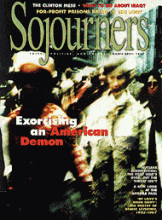Thirty years since the death of Dr. Martin Luther King Jr., America is still divided along racial lines. Why?
One-third of black Americans remain in poverty, many seemingly trapped in the social pathologies of the urban underclass. At the same time, the growing number and pro-
file of other racial minorities is dramatically changing the country's demographic landscape and enormously complicating America's increasingly colorful racial picture. People of color in America continue to disproportionately experience poverty.
But racism is more than poverty. In 1998, middle class African Americans, Latinos, Asian Americans, and Native Americans are all too able to tell personal stories of racial prejudice and discrimination. Most white people, on the other hand, seem tired of talking about racism, are opposed to affirmative action, and want to believe that their country has become a level playing field for all races. Almost no people of color believe that. Most significant, the United States is still a very segregated societyfrom residential patterns to cultural associations to church attendance. The number of stable, racially integrated neighborhoods across the country is still pitifully small. People of different races spend precious little non-work time together.
We have made undeniable progress since the end of legal segregation, but we have not come as far in the last 30 years as most expected. The hopes and dreams that followed the 1960s civil rights and voting rights legislation have yet to be fulfilled. America is still a racially divided society, where diversity is widely perceived as a greater cause for conflict than for celebration. Again, the question is why?
Read the Full Article
